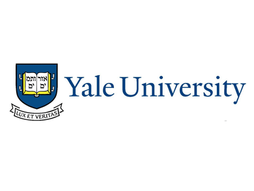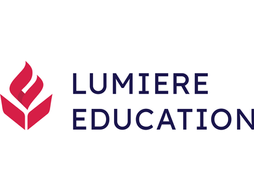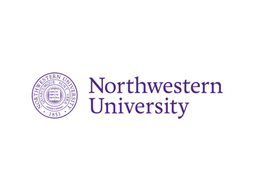10 Great Science Competitions for Middle School Students
If you’re a middle school student looking for some challenging experiences in the field of science, you could consider participating in science competitions. These competitions, which typically focus on subjects like physics, chemistry, biology, and engineering, offer an immersive educational experience. Participating in a science competition can give you the chance to challenge yourself, build knowledge and skill in subjects you’re interested in, add to your resume, and help with your future college applications and career.
Some competitions also offer great prizes, scholarships, and chances to have one's work published in prestigious publications. We’ve listed 10 great science competitions for middle school students that you can check out! Note that the following information is based on the most recent program, with dates subject to change but generally similar from year to year.
Location: Location varies by region and which level you’re qualified for.
Cost: $75 membership and registration fee.
Application Deadline: Last year, applications opened on February 12, and were due by April 8.
Dates: The rules and competition dates will be released by September 3.
Eligibility: Middle School students (classified as “Division B”) and high school students, (classified as “Division C”). All 6th to 9th graders in middle school: You will be organized in teams. A team may have up to fifteen (15) members. A maximum of five (5) 9th grade students is permitted on a team. Because middle schools that do not have grades 7, 8 or 9 are at a slight disadvantage, they may invite any combination of up to five (5) of their last year's 6th, 7th or 8th grade students to be part of the team.
Prize: Various medals and trophies
The Science Olympiad, a competitive science tournament for middle and high school students, is designed to encourage interest and achievements in science education through hands-on, inquiry-based learning activities. Student teams prepare for the competition throughout the school year to compete in various events covering a range of topics, including biology, chemistry, physics, earth science, and engineering.
In the competition, you will participate in events that may involve building devices, conducting experiments, and solving problems. The competition aims to test your knowledge, critical thinking, and practical application of scientific principles. The competition fosters teamwork, encourages creativity, and provides a platform for students to showcase their passion for science. Science Olympiad tournaments occur at regional, state, and national levels, which you can progress through. The competition has a structure of pre-decided events for each competition, ensuring a diverse and comprehensive assessment of students’ scientific skills and knowledge. To better prepare for the competition, you should familiarize yourself with the rules and requirements of each event, make use of textbooks and online resources, engage in hands-on experiments, and practice your time management skills.
Location: Virtual.
Cost: $150 registration.
Registration Deadline: Registrations typically close in December.
Dates: 4 contests available throughout the year.
Eligibility: Middle school students who are enrolled in public, private, or home schools in the United States or abroad are eligible to participate in ACSL contests
Prize: At the end of the regular season, top-scoring participants receive a certificate. For the ACSL Finals, the top-scoring students in each division will get a prize and a certificate.
The American Computer Science League (ACSL) Competition is a computer science contest conducted ever year, open to elementary, middle, and high school students across the world. The competition covers a wide range of topics related to computer science, including algorithms, data structures, computer organization, artificial intelligence, and more.
ACSL competitions consist of a series of contests, each focused on a different topic in computer science. These contests typically include solving problems, and showcasing an understanding of different computational concepts. The problems presented in the contests often require you to apply your creative thinking and problem-solving skills, encouraging you to apply your knowledge in practical scenarios. In higher levels, the contests will include a coding component, where you’ll be required to solve a problem using Python, C++, or Java, so make sure you brush up on one of these languages.
The ACSL competition offers different divisions based on students' grade levels, allowing you to compete against peers with similar age and experience. Successful teams and individuals may advance to higher levels of competition, such as the All-Star Contest. You can prepare for this competition by familiarizing yourself with the format, past problem sets, and sample contests and materials of the competition.
Location: Regional rounds are held in different locations every year. Science Bowl Finals are held in Washington, DC.
Participation Cost: Free.
Registration/Submission Deadline: Registrations open in October
Dates: Regional competitions take place between January and March; and the Finals take place in April
Eligibility: Open to students in 6th–12th grade. There are different competitions for middle school and high school students.
Prize: Cash prizes.
Conducted by the U.S. Department of Energy, the National Science Bowl has been running since 1991, and is one of the oldest running since science competitions. Fairly prestigious and competitive, the bowl is designed to test students’ knowledge and skills in math and science. Middle and high school students are divided into teams of 4-5 and compete in a fast-paced, question-and-answer formatted challenge. Thousands of students participate every year, applying their knowledge across different subjects including physics, energy, earth science, chemistry, biology, and math to contest in teams for cash prizes against their peers.
To participate, you will have to compete in regional rounds first. Students in teams compete locally, and regional winners will be invited to Washington, D.C. for the Science Bowl finals. The bowl provides a detailed resource pool to help students prepare, including competition rules, tips for success, and various study materials. The rules were compiled by former participants.
There is also an option for students to participate in the virtual competition, which has a different set of rules, which you can learn more about it here.
Location: Virtual, you have to submit project proposals online. National champions are invited to the National STEM Festival in Washington, D.C, which typically takes place in April.
Cost: Free. Travel and accommodation costs will be covered for you and your guardian if you’re selected for the National STEM Festival.
Registration/Submission Deadline: Registrations open in October and the submission deadline is November (tentative).
Dates: October to April (tentative).
Eligibility: Open to students in grades 6–12, including home-schooled students.
Prize: Cash prizes of up to $1,250.
The National STEM Challenge is a project-based competition for middle and high school students. Students are required to submit solution-based projects that address real-world problems, based on the competition’s themes. Students from across the country are eligible to participate. Around 200 National champions are selected for the Festival every year.
National Champions are invited to the National STEM Festival in Washington D.C., which is co-presented by the U.S. Department of Education and EXPLR. Students will have to create a PDF presentation on their project, which can be up to 3 pages long, in a minimum of 12-point font. Actionable projects that propose the use of the scientific method or engineering design process usually have more points than theoretical projects. Environmental stewardship, Future foods, Health & Medicine, Power the Planet, Space Innovation, and Tech for Good were the six broad themes for the program. Your teacher can register the whole class or you can register yourself individually.
Location: Virtual.
Cost: Free.
Registration/Submission Deadline: Registrations will begin in August and the final submission will be in March (tentative).
Dates: August to June (tentative).
Eligibility: Students in grades 6-9 are eligible to apply to this program.
Prize: Cash awards of $500-10,000.
eCYBERMISSION is a fairly intensive and entirely virtual STEM competition that encourages students to think outside the box to identify and engage with local problems in their communities through hypothesis, research, and experimentation. The competition invites projects across different subjects like environmental science, energy, public health, and safety, promoting practical and community-oriented scientific inquiry. The competition is promoted by the Army Educational Outreach Program (AEOP) and comes with a certain prestige.
Students in teams of 2-4 has to choose to participate in one of two tracks – Scientific Enquiry and Engineering Design. The first adresses a community problem, and Engineering Design, addresses a problem that can be solved via infrastructure work. There are awards for teams at regional, state, and national levels. Teams will be judged based on how well they apply scientific methods and engineering design processes, and receive comprehensive written feedback. The competition’s goal is to help students employ the same practices as scientists and engineers through a learned proficiency in technology and math. You will also get to interact with scientists, engineers, and other STEM professionals specializing in fields such as robotics, technology, forces and motion, environment, food and nutrition, national security and safety, and alternative energy sources!
Location: Virtual. The national winners will get to visit Washington D.C. with a guardian.
Cost: Free.
Registration/Submission Deadline: The submission deadline will be in January (tentative, last year the deadline was extended to the first week of February).
Dates: You can work on a three-week, two-month, or three-month long projects.
Eligibility: Open to all K-12 students. Middle school students can compete in the category open for students in grades 7–9.
Prize:
ExploraVision encourages students to focus on problem solving in real-world situations in the field of STEM. It is hosted by Toshiba and the National Science Teaching Association (NSTA), which is a vibrant community of 40,000 science educators and professionals committed to best practices in teaching science and its impact on student learning. This competition encourages students with interests across different STEM subjects and varied skill sets and capabilities to combine their imaginations with scientific methods to create a project toward future technology.
Since its inception, over 450,000 students have participated to compete by envisioning and communicating new technology 10 or more years into the future based on contemporary scientific methods. As a competitor, you will be expected to form a team of 2-4 and conduct research on how current technology can be improved. Your project submissions should include an abstract, a description section, a bibliography, and five sample web pages. The project description is the main part and should not exceed 11 pages. This is what sample projects generally look like, and here are some of the winning projects!
Location: Virtual. Submissions in the initial phase are to be submitted online. The Pitch Event and Final Event take place in person, locations very every year.
Cost: Free.
Registration/Submission Deadline: Registrations open in August.
Dates: Teachers can submit their students' proposals between August and November (tentative).
Eligibility: Open to students in grades 6–12 from schools that are at least 50% publicly funded. Students’ applications must be submitted by someone who is at least 21 years old and is from their school.
Prize: Cash awards of up to $100,000.
This competition encourages students from public schools to work on coming up with creative solutions to crucial problems in their communities, using the expansive network Samsung has created. The competition is designed to help students make a positive impact on local communities through innovation. The competition can also serve as a solid learning opportunity, as you will not only allow apply STEM concepts in real-life situations, but also build your awareness about real-world problems and study concepts often outside the school curriculum. You will also get one-on-one mentorship from a Samsung employee as you develop your project and build a prototype. Since the projects are student-driven, you will also hone your leadership skills.
You can participate individually or in a group. It’s mandatory to have your teacher as one of the team members. While registering, you will be asked to identify a problem in your community and how you will solve it using STEM concepts. How well you do this will determine your chances of making it to the state and national finals.
Location: The National Future City Competition will be held in Washington D.C.
Cost: $25 registration fee + competition and travel fees.
Application Deadline: Applications typically close in October.
Dates: Students are expected to start their projects in September and present their future cities in January at regional competitions. If they qualify, students will continue to the National Competition in Washington, D.C., in February.
Eligibility: Students in grades 6-8 are eligible.
Prize:
Future City is a hands-on cross-curricular educational competition that encourages practical applications of STEM subjects. Future City starts with a question, asking participants to contemplate how can the world be made a better place. This competition has grown to include more than 45,000 students annually from across the world. The competition sets high academic standards that students must meet to be considered. Future City is open to teams in grades 6, 7, and 8 who are from the same school, a home school environment, or are members of a nationally, regionally, or state-recognized youth-focused organization, such as the Boy and Girl Scouts, Boys and Girls Clubs, or 4-H.
With your team, you will brainstorm, research, design, and create cities of the future that demonstrate a solution you’ve designed to address a citywide sustainability issue. Future City pushes students to use the Engineering Design Process (EDP) and to build their project management skills to eventually showcase their solutions in a physical model of their futuristic city. This year’s challenge asked students to build a floating city and provide two out-of-the-box examples of how their floating city stayed afloat, worked, and kept its citizens healthy and safe. This would be a great competition for any middle school students with an interest in engineering.
Location: Initial rounds are virtual and the National Challenge takes place in Houston, TX
Cost: Free.
Application Deadline: Applications open in October and are typically due by December.
Dates: January to June (tentative).
Eligibility: Open to students in grades 5-8 from the U.S. and Canada.
Prize: Scholarships totalling up to $50,000.
This challenge, conducted by the Chemical Education Foundation (CEF), is its flagship program exclusively for middle school students. For this challenge, students will first participate in regional challenges to qualify for the National Challenge, and present their video and research work in response to the theme of the challenge – varies year on year. Typically, you are expected to propose founding a start-up company to investigate sustainability questions and community-based solutions.
Participating in the challenge will help students develop essential skills such as critical thinking, effective communication, entrepreneurship, and problem-solving, which could be useful for college applications and in their professional careers. You can participate either via the in-person or virtual option. Participants in both options will need to attend the National Challenge in-person in Houston, if selected. The first stage is when students participate in teams of 3-4 and attempt a 40-exam question administered by your school.
This is a qualifier for the regional challenge, in which students will have to answer 40 questions individually again. Regional participants then need to submit a 5-7 minute video which will be the basis of their selection for the National Challenge.
Location: Varies year on year.
Cost: $35 per student.
Application Deadline: Your enrollment depends on how well you compete at your entry-level science Bee.
Dates: Typically, October to December, depending on which level you compete at.
Eligibility: Students in grade 8 and below.
Prize:
The National Science Bee is a quiz competition for students, to test their knowledge across different concepts in science at each grade-appropriate level. Students, participating individually, must first qualify by taking the free Online Regional Qualifying Exam (ORQE) which is available in the fall. Abbout 60% of students will pass this and then move on to the regional finals, which are held both online and in-person from October-May and include paragraph length quiz questions.
The top 50% of students at each level in the regional finals will then qualify for the next competition – The National Science Bee National Championships. Students who qualify for the National Championships, or who finish in the top 50% in their age division at a regional final, will also qualify for the International Environmental Science Olympiad.
Bonus! Here are a few more science competitions you can consider participating in as a middle school student:
One more option - The Lumiere Junior Explorer Program
The Lumiere Junior Explorer Program is a program for middle school students to work one-on-one with a mentor to explore their academic interests and build a project they are passionate about. Our mentors are scholars from top research universities such as Harvard, MIT, Stanford, Yale, Duke and LSE.
The program was founded by a Harvard & Oxford PhD who met as undergraduates at Harvard. The program is rigorous and fully virtual. We offer need based financial aid for students who qualify. You can find the application in the brochure!
To learn more, you can reach out to our Head of Partnerships, Maya, at maya.novak-herzog@lumiere.education or go to our website.
Multiple rolling deadlines for JEP cohorts across the year, you can apply using this application link! If you'd like to take a look at the cohorts + deadlines, you can refer to this page!
Stephen is one of the founders of Lumiere and a Harvard College graduate. He founded Lumiere as a Ph.D. student at Harvard Business School. Lumiere is a selective research program where students work 1-1 with a research mentor to develop an independent research paper.
Image Source: ACSL logo









